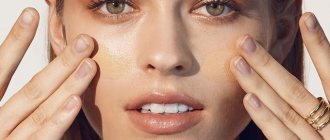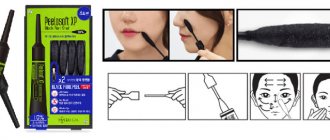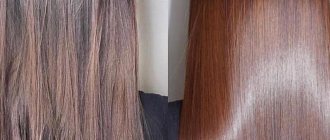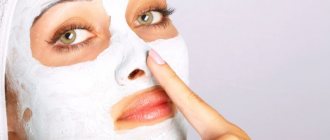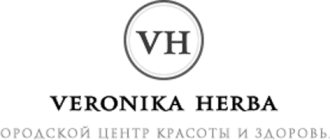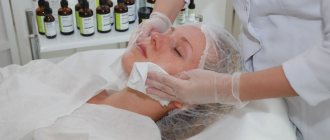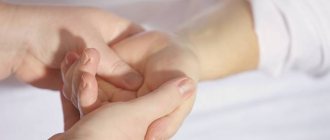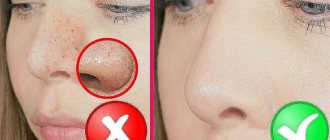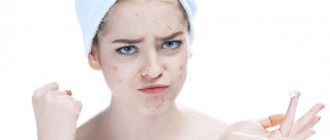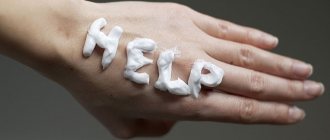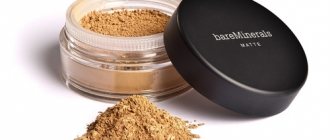AHA and BHA acids have a complex regenerating, anti-inflammatory, comedolytic and pigment-constricting effect. They regulate the functioning of the sebaceous glands, even out the tone and texture of the face. Peeling for problem skin plays an important role in complex acne therapy. The principle of peeling is simple: the drug dissolves horny scales, removes dead cells, and the regeneration process in the dermis is activated. Cells divide at an accelerated rate, the skin is restored with new, young cells. As a result, the skin looks smoother, younger, brighter, healthier.
Characteristics of oily and problem skin
Those with oily skin are more likely than others to face the problem of acne and acne. Excess sebum in the pores is a favorable environment for Propionibacterium acnes bacteria. As they multiply, they provoke an inflammatory process, and acne forms.
Acne dermatosis is a complex polymorphic, multifactorial disease of the sebaceous glands. Today, only the hormonal theory of acne development has been proven.
Mechanism of acne formation:
- Receptors in the dermis react to excess testosterone synthesis and encourage the sebaceous glands to produce sebum.
- If the keratinization process proceeds normally, then excess sebum simply comes out to the surface of the epidermis.
- If the stratum corneum is not regularly exfoliated, then the remaining fat gets stuck in the pores, mixing with dying corneocytes, forming sebaceous plugs or comedones.
- The blocked ducts of the sebaceous glands colonize bacteria, causing inflammation and the formation of a purulent element.
The main cause of acne is endocrine pathology - hyperandrogyny. But modern medical science does not operate with effective methods for correcting hormonal imbalance (only oral contraceptives and diet). Therefore, the most expressive effect is provided by external treatment aimed at speeding up exfoliation.
Peels prevent clogging of pores, free the ducts of the sebaceous glands from excess corneocytes and dissolve existing comedones. Acids also provide an antibacterial and disinfecting effect, even out skin tone and texture by removing a layer of old cells.
Which peels are suitable for acne skin?
If there are inflammatory elements on the skin and the integrity of the epithelium is compromised, then phenol, pure milk and glycolic peels are contraindicated. Other types of procedures can be performed with caution.
Glycolic
Glycolic acid is used carefully to treat acne. It has a small molecular weight, so it penetrates into the deep layers of the dermis.
In this case, not only dead cells of the stratum corneum are destroyed, but also healthy epidermis. In damaged areas, the risk of inflammation increases.
Therefore, acne often worsens after glycolic acid.
Important! To prevent this, it is recommended to use glycolic acid only in combination with other AHAs or use antibiotic creams in post-peel care.
Price: 600–2000 rubles per procedure.
Almond
Often used for problem skin, as mandelic acid has a pronounced anti-inflammatory and disinfectant effect. It is similar in action to the antibiotic Erythromycin, but does not cause resistance in bacteria and acts against all microorganisms (both viruses and fungi too).
Mandelic acid can be applied even to active inflammations.
Price: 2000–5000 rubles per procedure.
Salicylic
Salicylic acid (BHA) is a strong keratolytic; it penetrates pores better than others and dissolves sebaceous plugs. To improve product penetration and reduce discomfort during the procedure, BHA is used in combination with other acids.
Price: 1500–4000 rubles per procedure.
Salicylic acid is a common ingredient in cosmetics for skin with acne and enlarged pores. Manufacturers actively include it in skin care and even decorative cosmetic products. A toner with BHA has a pigment-constricting effect, disinfects the skin and evens out the Ph balance after washing.
Foundation with Salicylic acid also helps to isolate inflammatory elements and dry them out. Popular tones with salicylic acid: Dermablend 3D SPF 25 from Vichy, Anti-Blemish Solutions Makeup from Clinique.
Jessner Peel
A combination drug is used (salicylic acid + lactic acid + resorcinol). This peeling can also be performed for active inflammation. It dries out pimples well, dissolves comedones and exfoliates dead cells.
Jessner's peel can be superficial or medium. The depth of impact depends on the number of layers.
The cosmetologist applies the mixture of acids, and the client washes it off independently after 8–15 hours.
Price: 3500–8000 rub . for the procedure.
"Yellow" peeling
The procedure is carried out using retinoic acid (tretinoin). This is the active form of vitamin A. The procedure is the same as for Jessner.
“Yellow” peeling gives a pronounced result, smoothes the relief, speeds up healing, prevents the appearance of new comedones, narrows pores, and helps even with deep cystic acne.
Attention! “Yellow” peeling can cause aggravation after the procedure, so the cosmetologist prescribes maintenance therapy with tretinoin or antibiotics.
Price: 6500–15000 rub. for the procedure.
Tretinoin in dermatology is the “gold standard” for the treatment of acne. It can be used not in peeling courses, but in daily care. Preparations with tretinoin:
- Retin A (original drug, everything else is generic);
- Renova;
- Acnelyse;
- Retino-A;
- Stieva-A;
- Airol;
- Locacid.
Tretinoin is not certified in the Russian Federation, therefore, only drugs with adapalene (a derivative of retinoic acid) can be purchased in retail pharmacy chains: Differin, Bezugray, Adolen, Effezel.
TCA peeling
Trichloroacetic acid (TCA) is used primarily locally. It is contraindicated to apply to active inflammations. This drug is chosen for severe textural problems, post-acne, and scars. TCA peeling is classified as medium peeling. The rehabilitation period is 1–2 weeks.
Price: 3000–15000 rubles per procedure
Preparation for the procedure
For 14 days before peeling, you should not visit the bathhouse, swimming pool, solarium or sauna, or use scrubs and gels for deep cleansing.
How does peeling work?
- First, the doctor removes makeup and degreases the skin with a special lotion or tonic.
- Then apply salicylic acid to the prepared skin. The exposure time is several minutes.
- The doctor neutralizes the acid with alkali or simply washes it off with water.
- A nourishing soothing mask or cream is applied to the skin.
For what problems should peeling be used?
Problematic skin can be treated by adjusting your daily care routine to include products with acids or pharmaceutical preparations with tretinoin/adapalene. Peels are used to speed up the results.
But there are problems that can only be solved with the help of peelings:
- blue spots after acne;
- scars, scars after large papules;
- deep, painful cysts, conglobate acne, boils.
Important! Acids affect different stages of acne formation. They accelerate skin renewal and prevent the formation of comedones, dissolve sebaceous plugs and suppress the proliferation of pathogenic microorganisms.
Types of peeling by depth of influence
In general, if we talk about peeling in general, it is classified according to different parameters, but most often according to the depth of impact.
- Superficial - affects only the upper layers of the epidermis, the most painless and, in general, gentle type, its goal is to remove only keratinized scales. A course of superficial peelings is often carried out before more serious procedures.
- Superficial-medium - has a stronger effect and penetrates a little deeper into the epidermis to remove recently appeared wrinkles, spots, narrowed pores and improve the overall appearance of the skin.
- Medium - removes wrinkles, age spots, shallow scars and scars, penetrates right down to the dermis and affects not only dead but also living cells, therefore it has a recovery period, during which it is necessary to follow clear instructions.
- Deep - used to completely renew the skin, remove deep wrinkles, scars, burn scars and age spots. Since this type of surgery completely removes all layers of skin, it is performed only in a medical center hospital under the supervision of a surgeon and under anesthesia.
Types of peeling and their effect on the skin
The action of the last two types is due to biological regeneration processes, originally given by nature to humans. That is, old layers of skin are removed and during the restoration process, renewed, smooth skin without former flaws is formed.
Attention! All types of peelings have strict contraindications, especially medium and deep ones.
What effect can be achieved after the procedure?
On oily skin, acne often recurs. It is impossible to completely get rid of the problem without adjusting your lifestyle, diet and skin care. With the help of peelings you can achieve quick results. And to consolidate success, you need to include products with acids in your home care.
Salicylic, TCA, “yellow” and Jessner peels have a pronounced effect of drying out inflammation, reducing sebum production, and narrowing pores. They are preferable for oily skin.
After rehabilitation, the skin looks matte, smooth, small wrinkles and traces of healed inflammation are smoothed out.
For dry skin with inflammation, glycolic, almond, milk, and pyruvic are more suitable. They speed up renewal and healing, even out the tone. Also, acids free the ducts of the sebaceous glands, sebum freely comes out and performs its direct and natural function - moisturizes the epidermis.
Effect
After a course of superficial peeling, the effect can be seen with the naked eye: the skin acquires a healthy natural tone, blush appears, pigment spots disappear, pores are cleaned and narrowed, the functioning of the sebaceous glands improves, the relief is smoothed and peeling disappears.
Superficial peeling - before and after photos
But all this is possible as long as the problem is not very pronounced or advanced, otherwise a deeper impact will be required.
Peeling at home
Problem skin does not always react unambiguously to acids. Even some novice cosmetologists are wary of clients with rashes due to the unpredictability of the result.
It is possible to exfoliate acne at home, but you must observe some nuances:
- buy a certified product from a reputable manufacturer and strictly follow the protocol for application, exposure, and neutralization;
- do skin tests for intolerance to the active substance;
- First, carry out the procedure on a small area (for example, only the forehead);
- You can consult a specialist and conduct the first session in the salon, and complete the course at home.
There are many products for home exfoliation on the market - almost every reputable beauty brand produces a line with acids.
Products for home use are sold in cosmetology stores. The advantages of such products: reasonable price, convenient format, clear protocols for use. Plus, each company immediately offers neutralizers, SPF creams, skin preparation and post-peeling care products for the product.
How does superficial peeling work on the skin?
The most common surface peeling method is acid peeling. The variety of acids for this procedure is very large.
The acids used are usually weak and cannot greatly harm the skin. Vascular irritation occurs, blood flow increases, which brings nutrients and oxygen to the cells, improving their functioning.
The upper scales of dead epidermis dissolve, which are washed off with water at the end of the peeling. Self-regeneration of the body is not used during superficial peeling.
In addition to acids, abrasives (scrubs) and physiotherapy devices are also used. Their mechanism of action is different, but is aimed at the same thing - increasing blood flow to the skin and removing the top layer of the epidermis.
Top home remedies for peeling
Here are the most effective drugs for problem skin, which can be purchased for less than 1,500 rubles:
- Gel with chitosan, based on glycolic acid 10% from MEDICAL COLLAGENE 3D (Russia). Price 700 rub./30 ml.
- Peeling with mandelic acid 5% from ALPIKA (Russia). Price 1500 rub./30 ml.
- AXA 8% / Homework from PREMIUM (Russia). Acids in the composition: glycolic, malic, citric, lactic. Price 900 rub./100 ml.
- Raspberry peeling for oily skin from New Line. Acids in the composition: glycolic (20%), lactic (5%), salicylic. Price 800 rub. for 100 ml.
- Salicylic, retinol, milk, Jessner peels from Home-Peel (Ukraine). Average price - 1500 rubles. for 10 ml.
Also, many products with acids are produced by Korean brands. Korea in the beauty world is perceived as “New France”. Today, almost all innovations come to the market from the South Caucasus.
Acid pads are packages of cotton pads soaked in an acid-containing product. The application procedure is the same as with regular peeling, but the release form is convenient and hygienic. They are produced by the following brands: Missha, Scinic, A'PIEU, Cosrx.
A rolling mask is an excellent alternative to scrubs, which are contraindicated for rashes, as they injure it with abrasive particles and spread the infection to unaffected areas. The roll should be applied in a thin layer to a clean face, wait half a minute and begin to “roll” the mask over the skin. The mask capsules are removed along with dead skin particles. You can use a rolling pad to remove peeling after regular peeling. But this is an optional remedy; it will not help get rid of acne. Rolling masks are produced by the following brands: Secret Key, Ekel, Mizon, Shelim, Tony Moly.
Types of superficial peeling
Superficial peeling can be divided according to the method of exposure.
- Mechanical is a well-known method regularly used by girls both at home and in the salon. It is a scrub with abrasive particles - sugar, salt, finely ground coffee, fruit seeds and other components. The composition is applied to skin cleansed of makeup and distributed with light massage movements. The whole procedure lasts no more than 5-10 minutes.
- Physical – peeling can be done using this method only in a salon, since specialized devices are used for it: ultraviolet, ultrasonic, steam and others.
- Chemical is the oldest method, actively gaining popularity both for home use and for salons. Low concentration acid solutions are used as the main components. It is for superficial peelings that fruit (glycolic, mandelic, pyruvic, malic, ascorbic, ferulic and others) or lactic acids are used.
- Biological – carried out with the participation of protein enzymes, which accelerate the skin’s independent metabolic processes and its regeneration. It can also be done at home or at a cosmetologist.
Skin care rules after exfoliation
As practice shows, 85% of unpleasant consequences after peeling on problem skin occur due to improper rehabilitation care.
For problem skin, it is always necessary to select creams and serums marked non-comedogenic (do not clog pores). But not all manufacturers care about labeling their products.
Important! Comedogenic components are contraindicated for women with acne, as they can aggravate the situation. Undesirable ingredients: talc, lanolin, alcohol denatured alcohol, oils (castor, cocoa, coconut, wheat germ, peanut, sunflower, soybean), butyl stearate, caprylic acid.
The skin, cleansed, renewed, thinned after peeling, absorbs all care products well. It is important to double-check all household cosmetics to avoid causing acne relapse.
The peeling product itself may contain risky ingredients. The exposure time of the product on the skin is too short for the pores to become clogged.
After glycolic and “yellow” peeling, cosmetologists can prescribe a cream with antibiotics (erythromycin, synthomycin, clindamycin) for an anti-inflammatory effect.
To speed up skin renewal, it is advisable to use ointments or mousses with panthenol, hyaluronic serums, and nourishing creams with safe oils.
You need to choose sun protection products especially carefully, preferably with physical or mineral SPF filters (zinc oxide, titanium dioxide). UV protection is a mandatory step in skin care after peeling.
Who needs surface cleaning?
Women over 25 years of age should pay attention to this procedure to prevent the first signs of photoaging, age spots, shallow wrinkles and improve complexion.
Teenagers with problem skin also need superficial cleansing to combat acne and post-acne, acne and overactive sebaceous glands.
In general, this type has no age restrictions, so superficial peeling can be introduced into weekly care at almost any age, if the skin requires it.
Precautionary measures
Fruit peels are not recommended for active inflammation. If you have fresh acne, it is better to prefer salicylic, retinoic or Jessner.
All peels are contraindicated during pregnancy and breastfeeding, or during the acute stage of herpes. If you have kidney or liver failure, diabetes, or problems with the thyroid gland, you should consult a specialized doctor before the procedure.
After the procedure, be sure to follow the rules of hygiene: wash makeup brushes, use disposable towels, wipe your mobile phone with alcohol, change your pillowcase to prevent infection on the renewed skin.
Advantages and disadvantages
This cosmetic procedure has its pros and cons, which may influence the decision to visit a cosmetologist. Positive points include:
- complete painlessness;
- harmlessness;
- the ability to perform at home;
- there are no many contraindications;
- short recovery;
- carried out in any season of the year using subsequently cream with SPF.
Disadvantages of this type include:
- superficial peeling does not give a “wow” effect, it is just a routine, regular skincare procedure;
- Minor redness and peeling may occur.
Alternatives to contraindicated peels
If acid peels are directly contraindicated, acne can be treated with enzyme peels - with papain, bromelain, quinoa extract. These are gentle procedures that do not provoke photosensitivity.
Medical Collagene has a good selection of enzyme gels (up to 800 rubles).
Another alternative option for exfoliation and acne treatment is azelaic acid. It is not included in peels, but is considered a relatively safe remedy for problem skin. Preparations with azelaine: Skinoren, Azogel, Azik-derm.
What are the contraindications?
The procedure is a type of aggressive effect on the epidermis, so it is not allowed for everyone. Contraindications include:
- stage of exacerbation of infectious, viral, bacterial, fungal processes on the skin;
- unhealed wounds, cuts, abrasions, scratches;
- tendency to form keloid scars;
- tanning 2 weeks or less old;
- chronic diseases in the relapse stage;
- oncological pathologies;
- intolerance to the components of peeling preparations;
- pregnancy and lactation;
- recent laser procedures;
- large moles;
- unstable mental state.
The procedure is not performed if the patient is not feeling well: with fever, pain, high blood pressure, colds, or other ailments.
Patient reviews
The forums are full of positive reviews about peelings from owners of problem skin. This is truly one of the few effective acne treatments.
Girls who did not carefully select the drug and type of peeling complained about the lack of the desired effect.
Girls who were not warned about post-procedure care tactics speak negatively about the procedure.
Indications for superficial peeling
The procedure is indicated for women after 25-30 years of age, but due to the loyalty of the effect, it can be performed earlier if desired, even on very young but problematic skin.
Cleaning is recommended for the following problems:
- peeling
- dull color
- flabbiness
- excessive oily skin
- acne
- acne and post-acne
- photoaging
- small pigment spots
- facial relief
- enlarged pores
